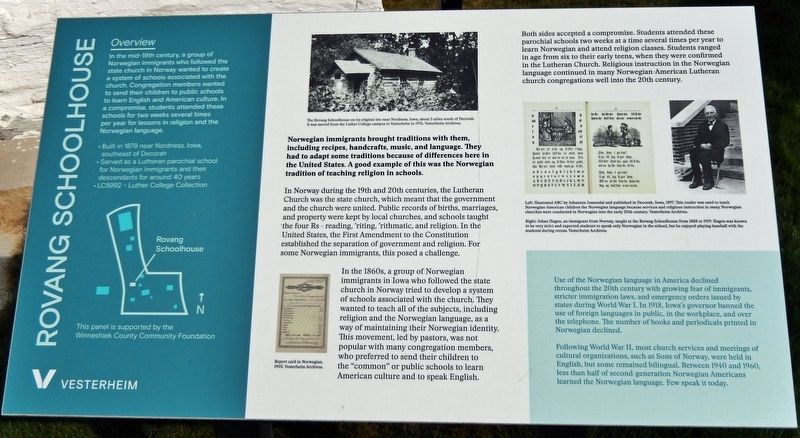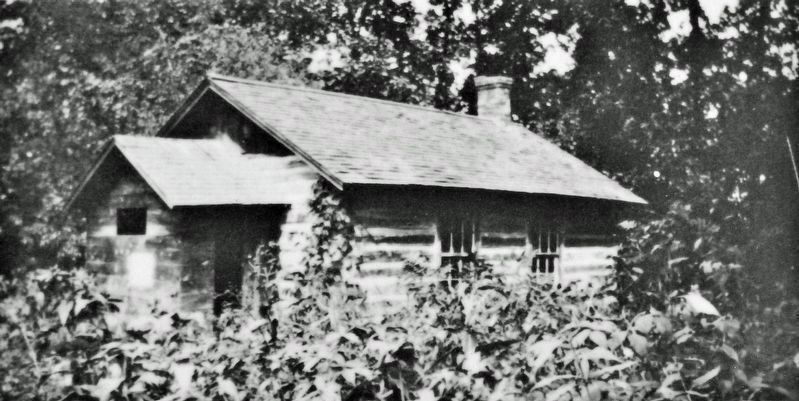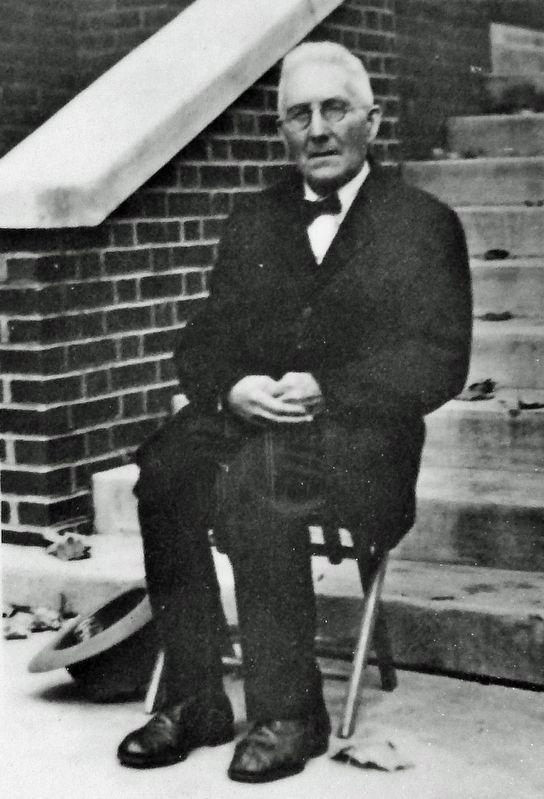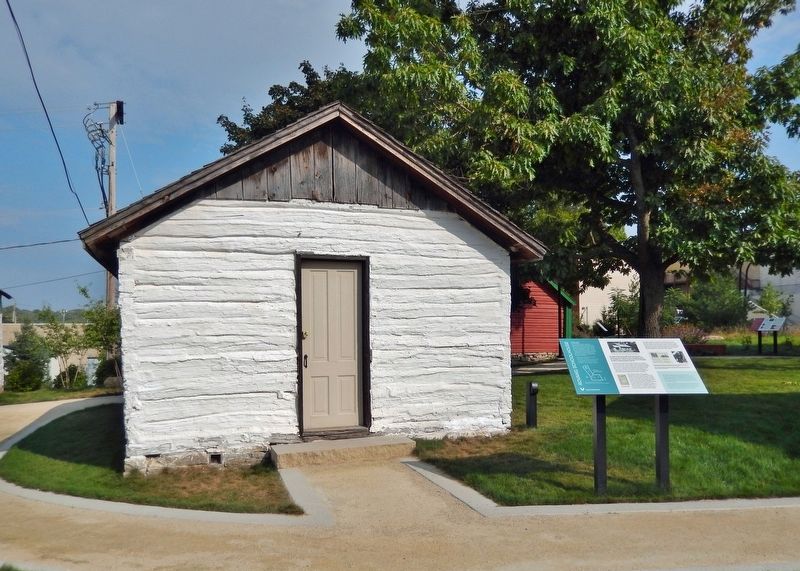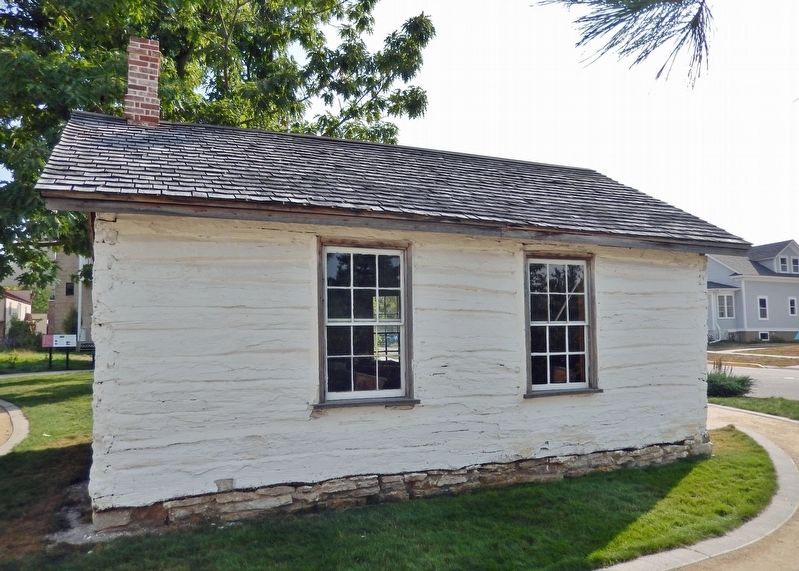Decorah in Winneshiek County, Iowa — The American Midwest (Upper Plains)
Rovang Schoolhouse
Heritage Park, Vesterheim Norwegian-American Museum
Overview
In the mid-19th century, a group of Norwegian immigrants who followed the state church in Norway wanted to create a system of schools associated with the church. Congregation members wanted to send their children to public schools to learn English and American culture. In a compromise, students attended these schools for two weeks several times per year for lessons in religion and the Norwegian language.
• Built in 1879 near Nordness, Iowa, southeast of Decorah
• Served as a Lutheran parochial school for Norwegian immigrants and their descendants for around 40 years
• LC5992 — Luther College Collection
Norwegian immigrants brought traditions with them, including recipes, handcrafts, music, and language. They had to adapt some traditions because of differences here in the United States. A good example of this was the Norwegian tradition of teaching religion in schools.
In Norway during the 19th and 20th centuries, the Lutheran Church was the state church, which meant that the government and the church were united. Public records of births, marriages, and property were kept by local churches, and schools taught the four Rs - reading, 'riting, 'rithmatic, and religion. In the United States, the First Amendment to the Constitution established the separation of government and religion. For some Norwegian immigrants, this posed a challenge.
In the 1860s, a group of Norwegian immigrants in Iowa who followed the state church in Norway tried to develop a system of schools associated with the church. They wanted to teach all of the subjects, including religion and the Norwegian language, as a way of maintaining their Norwegian identity. This movement, led by pastors, was not popular with many congregation members, who preferred to send their children to the “common” or public schools to learn American culture and to speak English.
Both sides accepted a compromise. Students attended these parochial schools two weeks at a time several times per year to learn Norwegian and attend religion classes. Students ranged in age from six to their early teens, when they were confirmed in the Lutheran Church. Religious instruction in the Norwegian language continued in many Norwegian-American Lutheran church congregations well into the 20th century.
Use of the Norwegian language in America declined throughout the 20th century with growing fear of immigrants, stricter immigration laws, and emergency orders issued by states during World War I. In 1918, Iowa's governor banned the use of foreign languages in public, in the workplace, and over the telephone. The number of books and periodicals printed in Norwegian declined.
Following World
War II, most church services and meetings of cultural organizations, such as Sons of Norway, were held in English, but some remained bilingual. Between 1940 and 1960, less than half of second-generation Norwegian Americans learned the Norwegian language. Few speak it today.
[other photo captions]
• Report card in Norwegian, 1905.
Erected by Vesterheim Norwegian-American Museum.
Topics. This historical marker is listed in these topic lists: Churches & Religion • Education • Immigration.
Location. 43° 18.297′ N, 91° 47.522′ W. Marker is in Decorah, Iowa, in Winneshiek County. Marker is on North Mill Street just north of West Water Street, on the right when traveling north. The marker is located in Vesterheim Norwegian-American Museum Heritage Park. Touch for map. Marker is at or near this postal address: 520 West Water Street, Decorah IA 52101, United States of America. Touch for directions.
Other nearby markers. At least 8 other markers are within walking distance of this marker. Stabbur (a few steps from this marker); Egge-Koren House (a few steps from this marker); Haugan House (a few steps from this marker); Bethania Church (a few steps from this marker); Valders House (within shouting distance of this marker); Norsvin Mill
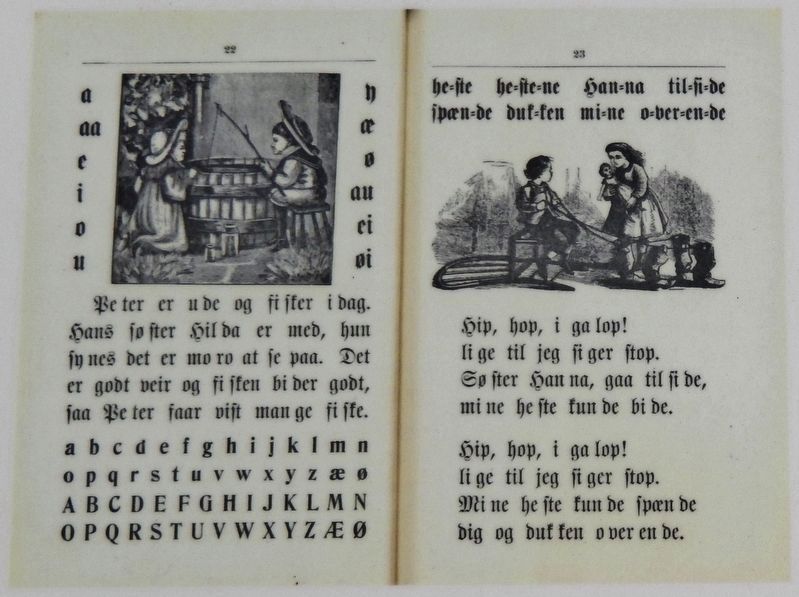
Vesterheim Archives
3. Marker detail: Illustrated ABC
Illustrated ABC by Johannes Jossendal and published in Decorah, Iowa, 1897. This reader was used to teach Norwegian-American children the Norwegian language because services and religious instruction in many Norwegian churches were conducted In Norwegian into the early 20th century.
Related markers. Click here for a list of markers that are related to this marker. Vesterheim Norwegian-American Museum Heritage Park
Also see . . . Rovang Parochial School. (Includes link to a virtual tour of the interior.) Excerpt:
This log school house, erected in 1879 several miles southeast of Decorah, was used mainly for religious instruction conducted in two-week sessions during the regular public school term. Students were allowed to take that time off from public school. The “common school controversy” regarding the effect of public school on the cultural assimilation of immigrant children was a widely waged debate in the mid-1800s. The day began and ended with devotions. Instruction was in Norwegian and included the Norwegian ABC’s, Lutheran catechism, Bible history, and hymns. Johan Hagen, born in Norway in 1849, taught parochial school here and at other locations in the area from 1888 until 1918.(Submitted on November 20, 2023, by Cosmos Mariner of Cape Canaveral, Florida.)
Credits. This page was last revised on November 24, 2023. It was originally submitted on November 16, 2023, by Cosmos Mariner of Cape Canaveral, Florida. This page has been viewed 59 times since then and 14 times this year. Photos: 1, 2, 3, 4, 5, 6. submitted on November 20, 2023, by Cosmos Mariner of Cape Canaveral, Florida.
